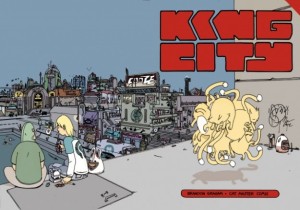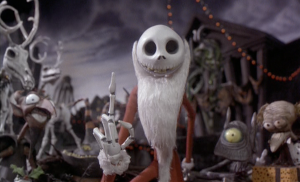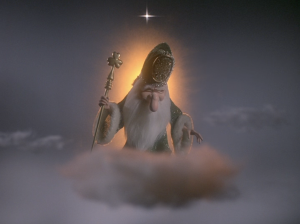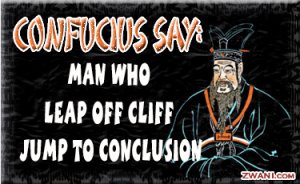Another year is coming to an end, and with it another slate of new film releases. As I did last year, I came up with my own (necessarily incomplete) list: not necessarily the “best” of the year, but my favorite movies and other pop culture among those I was able to catch in the last twelve months. And unlike last year, I’m including a list of some non-2014 movies I caught up with for the first time.
I didn’t keep a list of movies I watched (other than the list I kept during October), but perhaps I should have, as this was a big year for me to catch up on movies. Keeping a list is not a passive act, however: with list-making comes the desire to add to the list, to see it grow. For my rather meager reading this year, that’s a good thing, but if I had kept track of movies I watched I might have tried to watch even more than I did, and felt as drained as I did after my October marathon. Still, lists are great for looking back at what you did, watched, or read over the year: January seems awfully long ago when I look back at what I was doing then.
I saw sixteen 2014 releases, either in the theater or at home. There are several I still haven’t seen, such as Interstellar and The Babadook, that I expect to respond to when I catch up with them, but here are my top three favorites so far:
3. The Grand Budapest Hotel. I’m a sucker for writer/director Wes Anderson’s carefully-curated style, and I was particularly receptive to this multi-layered story, set in the fictional Alpine nation of Zubrowka. I had a Czech composition professor who always bristled at the term “Eastern Europe,” and liked to point out that Prague is actually to the West of Vienna; it was hard not to think of him, and of a summer trip to Prague, when watching this. Inspired by the writings of Stefan Zweig, Anderson gets the sense of being at the crossroads of East and West, of being somewhere off the map, and of “small” countries’ determination to hold onto their idiosyncrasies in the face of empire, be it political or cultural. In addition, the majority of the film is set in the early 1930s, the anxious period of fascist uprisings that would inevitably lead to war and sweep away the old world that the titular hotel and its dapper concierge (Ralph Fiennes) represent. The juxtaposition of a farcical caper with looming historical tragedy gives the standard Andersonian business a more directly political edge than usual, and is a good fit with the sadness that is often just under the surface of Anderson’s whimsy.
2. Whiplash. Between this film, written and directed by Damien Chazelle, and Grand Piano, which Chazelle wrote, I think I have a favorite new filmmaker. Whiplash’s story of an ambitious student drummer (Miles Teller) and the punishing, even sadistic treatment he receives at the hands of his jazz band director (J. K. Simmons) examines the personal price of artistic ambition in a way that is more brutally honest (emphasis on “brutally”) than most films about budding artists and their mentors usually are. In fact, while the plot has the twists and turns of a taut thriller, the tantrums, self-laceration, and even the explosions of violence in the film don’t seem that exaggerated, bringing to mind both certain high-strung individuals I’ve known as a musician, and the hazing scandals that have afflicted some high-profile college bands in recent years. It also manages to leave the ultimate question—is it all worth it?—up to the audience to decide. The film makes a fitting and devastating postscript to the series of films about bands and inspirational music teachers I wrote about this fall; Mister Holland’s Opus, it ain’t.
1. The Lego Movie. Sure, it’s a film for kids—a feature-length toy commercial, even. But even after repeated viewing, it’s a stunning technical and aesthetic achievement that has something meaningful to say about the creative process and relationships. Honestly, I could just look at the billowing ocean of Lego bricks for hours; the fact that the characters are so vibrant is a bonus, and a testament to the writing and direction of Phil Lord and Chris Miller. The notion that each of the main Master Builder characters represent a creative type (or a single facet of a creative mind) is an easy leap to make (it could be a Buzzfeed quiz: “Which Lego Master Builder are you?”), but I’ll be darned if I don’t relate to Uni-Kitty’s desperate attempts to stay positive in the face of disaster, or Wyldstyle’s—that is, Lucy’s—repeated reinventions and desire to be “edgy.” The beautiful thing about the story is how it brings together and values the contributions of all kinds of personalities, even while recognizing that everyone has flaws. It’s a great example of something I’ve long felt: that broadly-drawn characters, even cartoons, can still have feelings, and it makes The Lego Movie one of the most humane films of the year.
Honorable Mention: I was charmed by the Swedish import We Are the Best!, as low-key in its depiction of three middle school girls who form a punk band as Whiplash was intense. Directed by Lukas Moodysson, We Are the Best! is mostly slice-of-life, drawing much of its comedy from the contrast between the girls’ bravado and their meager talent, but it never makes them the butt of the joke. Rather, it’s the clueless adults who don’t know what to make of the trio, whether it’s one girl’s dad trying to join their “jam session” on the clarinet, or the manager of the activity center where they rehearse underestimating the lead guitarist (the only one of the three who can actually play).
This was also a good year for blockbuster entertainments: although I chose not to rank more than four movies, I enjoyed Captain America: The Winter Soldier and Guardians of the Galaxy, as well as Gareth Edwards’ revival of Godzilla. I was late seeing Godzilla, so I had already heard that the big lizard doesn’t get a lot of screen time, but it was almost comical how Edwards contrived to keep him off screen, hidden behind smoke, buildings, or even closing doors. I can’t help but feel that some of the complaints were driven by viewers who hadn’t seen the original Toho films, which also often kept the monsters off screen for the majority of their running times. If anything, my biggest complaint was an over-reliance on coincidence to keep star Aaron Taylor-Johnson at the center of the action, but, you know, movies.
Other highlights
Some of the best movies I saw this year were older ones; first-time non-2014 movies that I loved include (in no particular order) Nothing Lasts Forever, TerrorVision, A Town Called Panic, The Whisperer in Darkness, The Haunted Palace, Matinee, Gang Busters, The Visitor, Eraserhead, Strike Up the Band, Drumline, Scott Pilgrim vs. the World, and Thoroughly Modern Millie.
I’m also glad I had the opportunity to see The Texas Chain Saw Massacre in a beautiful 4k restoration last October; as someone who didn’t enjoy horror films as a kid, I never thought I would go out of my way to see this film, but I knew I would regret it if I passed up the opportunity. I took the precaution of inviting a horror-savvy friend to go with me so I wouldn’t chicken out, but it turned out he hadn’t seen it either! As so often happens, it wasn’t nearly as scary as I had built up in my mind. Suspenseful? Yes. Graphic? Very. Horrifying? Sure. But after decades of imitators, I realized that in a way I had already seen it, by way of the influence that trickled down through the numerous slasher movies that followed. The next day, I heard chainsaws running all day, as my neighbors were cutting down a tree; it didn’t freak me out, but it tickled me to imagine that they were extending my TCSM experience beyond the theater, like Disney Imagineers.
Lowlights
The worst 2014 release I saw this year was Mr. Peabody & Sherman, which was both mean-spirited and tried way too hard to be edgy; it felt very much like a throwback to Dreamworks’ snarky, post-Shrek output, and I am mystified by the middling-to-positive reviews it received. Even my kids didn’t seem to enjoy it that much, and quickly forgot about it.
First-time non-2014 films that didn’t do much for me included Radar Men From the Moon, the 1961 Babes in Toyland (which had Ray Bolger and not much else), the 1960 13 Ghosts (with Margaret Hamilton—maybe a retrospective of Wizard of Oz cast members’ careers is in order), and Demons, which started out really promising but lost me about halfway through. The most ridiculous movies I saw this year include the 1952 Bloodhounds of Broadway, Shanghai Surprise, and Elvira: Mistress of the Dark, although I’m probably forgetting some.
Thanks for reading and watching along with me this year. I hope you’ll return in 2015!



































